A 1970s Future: The Man Responsible by Stephen Robinett
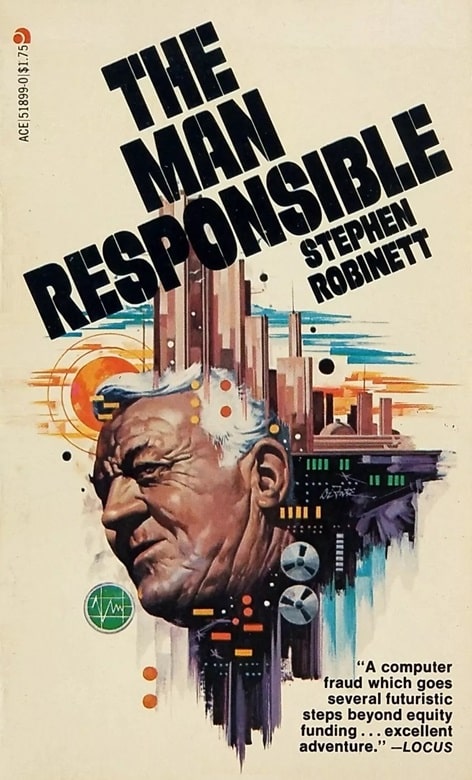 |
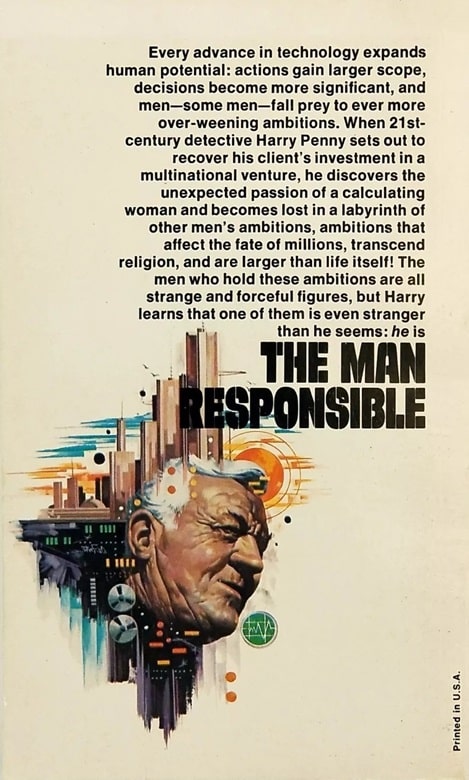 |
The Man Responsible (Ace Books, April 1978). Cover art by Vincent DiFate
This latest in my loose series of essays about fairly obscure 1970s/1980s SF books is about a writer who looked to be establishing a potentially significant career as what might be called a “Ben Bova” writer. Alas, Stephen Robinett contracted Hodgkin’s Disease as a young man, and died at only age 62 in 2004. His final two novels, Final Option and the sadly ironically titled Unfinished Business, were published in 1990, and are only borderline SF if at all, crime stories about a financial journalist investigating fraud. Robinett himself was a lawyer and a business journalist, and this background certainly informs his work, including the novel I’m discussing here.
I have called Robinett a Ben Bova writer, in the sense that the bulk of his stories were published in Ben Bova’s Analog, and his one collection, Projections, was part of a short-lived series of books from Ace labeled “Analog Books,” and edited by Bova. Robinett followed Bova to Omni, and his final short story appeared there in 1983. But Robinett also sold to Vertex, to Jim Baen’s Galaxy, and to Damon Knight’s Orbit, while his first sales were to John W. Campbell at Analog, beginning with “Minitalent” in March 1969. This makes him, along with Rob Chilson, Stepan Chapman and James Tiptree, Jr., one of Campbell’s latest discoveries.
The other interesting thing about Robinett’s first stories — all the way through a couple Galaxy pieces in 1975 — is that they were published as by “Tak Hallus.” And takhallus is a Persian word (derived from Arabic) meaning… pseudonym.
[Click the images to be responsible for bigger versions.]
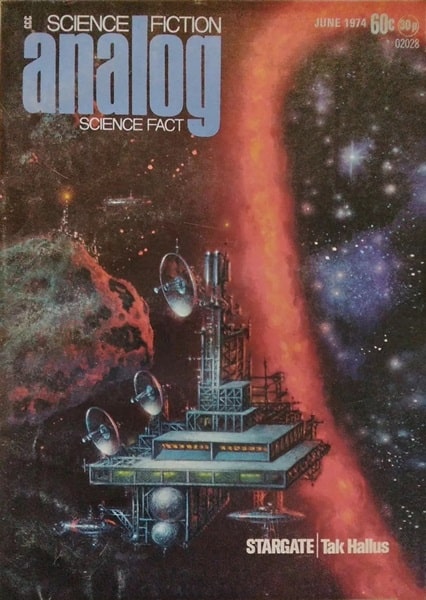 |
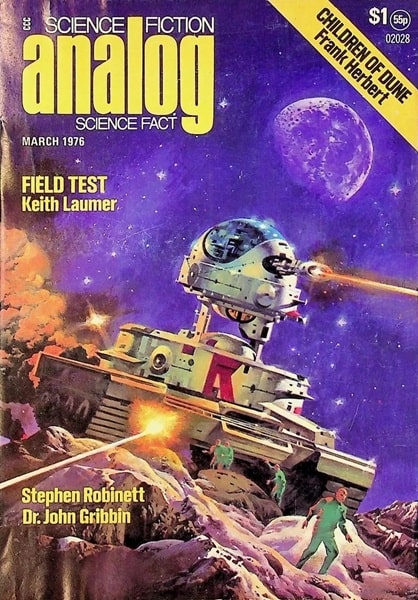 |
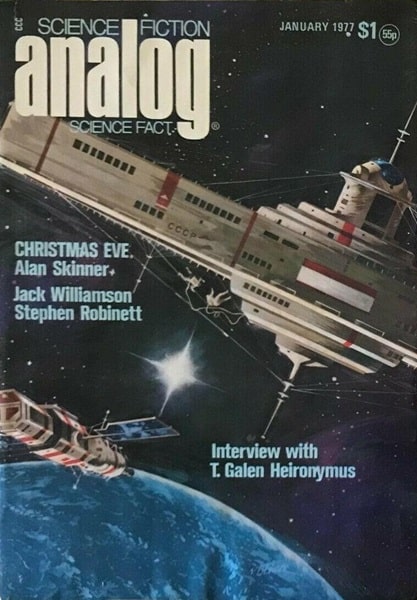 |
 |
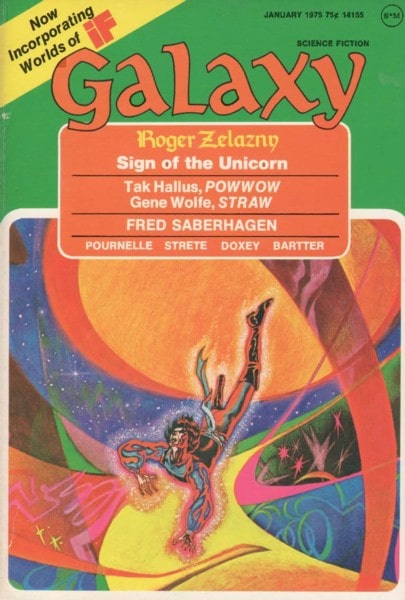 |
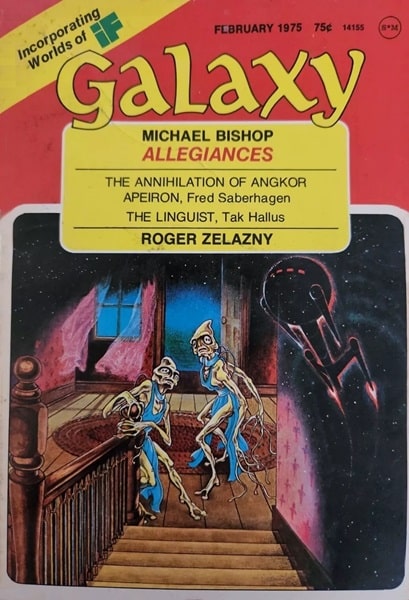 |
Some of Stephen Robinett’s earliest stories: Analog Science Fiction/Science Fact, June 1974,
with the first installment of Stargate (as by ‘Tak Hallus’), and the March 1976, January 1977,
and May 1978 issues. Two Galaxy issues: January and February 1975. Cover art: Frank Kelly
Freas, Vincent Di Fate, Vincent Di Fate, Richard Powers, Freff and Pini, Wendy and Richard Pini
Robinett’s first novel was Stargate, which was serialized in Analog under the Tak Hallus byline in 1974, ending with the August issue, which happens to be the first SF magazine I ever bought. (I eventually read the serial by borrowing the June and July issues from my local library.) He also had a novel in Roger Elwood’s Laser Books imprint, Mindwipe!, as by “Steve Hahn,” presumably based on the “Tak Hallus” story “Mindwipe,” from Analog for December 1969. The Man Responsible appeared in 1978 from Ace Books, though it too is an expansion of an earlier story, a novella also called “The Man Responsible,” from the January 1977 Analog.
The Man Responsible is narrated by Harry Penny, a lawyer in relatively near future Los Angeles. One of his usual clients, a wealthy widow, hires him to investigate a project her husband had invested in, Tomorrow’s City Today, an attempt to build a futuristic city in Argentina. But his client claims she tried to tour the site, and there was nothing there. And they won’t return her investment — all of $160.
Soon after he is accosted by a young man, Marshal Pierce, who wants Penny to represent him in an assault case. And, by a weird coincidence, the assault was on an officer of the corporation supposedly building Tomorrow’s City Today. And Marshal Pierce had worked for Dr. Edward Sterling — the originator of that corporation, Silver River.
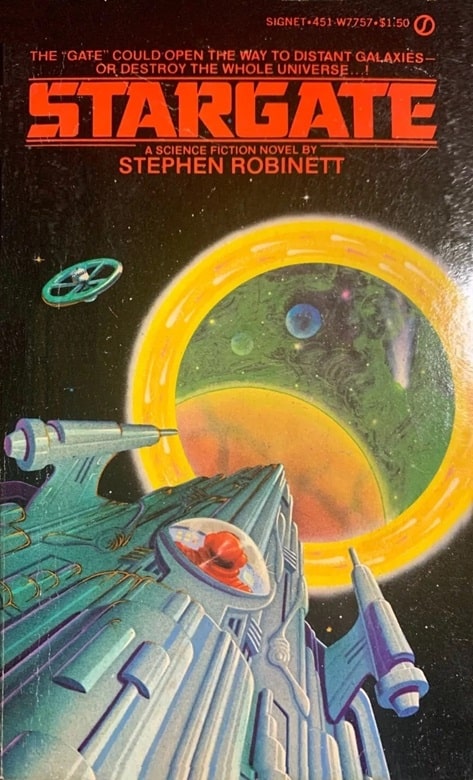 |
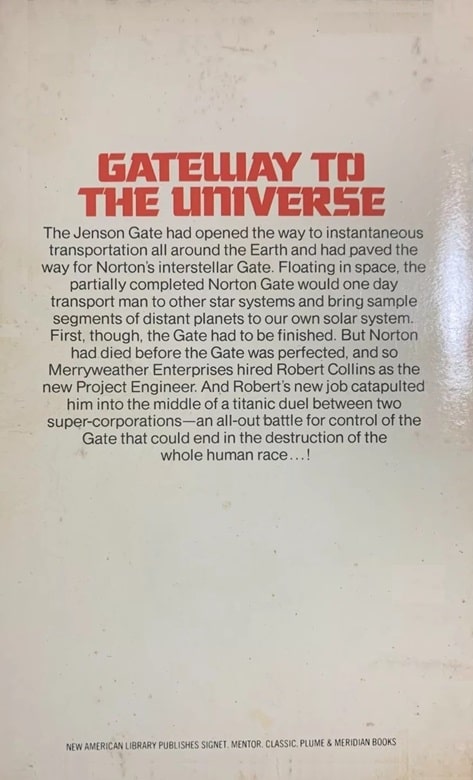 |
Stargate (Signet/New American Library, November 1977). Cover art uncredited
Well, that’s getting a little complicated. And it stays that way. Dr. Sterling was a doctor but became a philanthropist after his father died. He invested in various variously crazy schemes involving ways of life extension, including uploading to a computer, transferring memories via RNA, and working with a mystic on soul transfer. Yet more recently he pivoted to the Silver River project. Penny’s investigations include a visit to Silver River, where they show him videos that purport to be Tomorrow’s City Today.
He meets one of the Argentinian representatives of the corporation, a certain Colonel Vargas, the very man Marshal Pierce attacked. And while investigating Vargas he catches a glimpse of his mistress — who turns out to be Nora Sterling, Dr. Sterling’s wife who was also, a number of years earlier, Harry Penny’s girlfriend.
The novel follows all of these strands, with side issues such as Penny getting beat up by thugs who want some brain scans he took from the brain uploading facility; and Nora Sterling showing up at his house to reignite their relationship, and the travails of Marshal Pierce, who swears he remembers nothing of the supposed assault on Colonel Vargas, but who admits to terrible headaches.
There’s a lot more going on — for example, Dr. Sterling is surprisingly hard to meet in person. And there’s the matter of Ecom, the computer that runs the US economy. And the question of Colonel Vargas’s real loyalties — to the Argentinian government that employs him, or the downtrodden people of his country. And, of course, the question of who really is the man responsible?
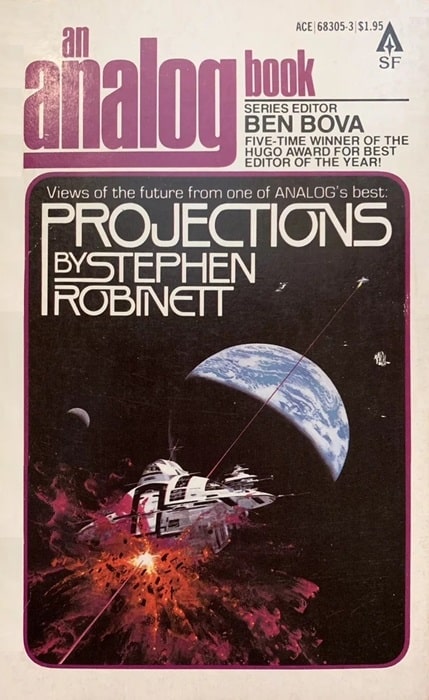 |
 |
 |
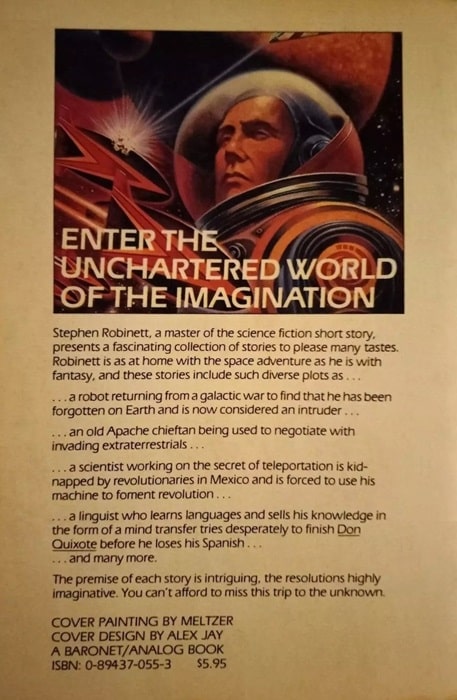 |
Two editions of the collection Projections: Ace Books, January 1979,
and Baronet Publishing, April 1979. Cover art by Dean Ellis and Meltzer
It’s not a uninteresting novel but it’s kind of a mess. There are several interesting SFnal ideas to pursue, but the book doesn’t really pick one to stick to. The ending is — again, a bit confused, but not unrealistic. And Harry Penny ends up defining his own responsibility in a somewhat lawyerly fashion.
I read the novella from which the novel was expanded. I was already an Analog subscriber when it appeared, and I had enjoyed the “Tak Hallus”/Stephen Robinett stories I’d read, so I’m sure I read this story back then, but I really didn’t remember it. The story follows the basic outline of the novel, but lacks a lot of the subplots. There is no RNA memory transfer, no faux-Eastern mystic talking about soul transfer, no Marshal Pierce and his mysterious assault case. Colonel Vargas’ mistress is still Harry’s ex, but she’s not Dr. Sterling’s wife any more.
And the resolution is a lot more straightforward, even if it’s essentially the same as that of the novel. I suspect Robinett figured the story could be expanded to novel length by adding these extra strands — and to be fair there was potential in all of them — but he just didn’t take enough care to fully integrate and resolve them. The novel is OK, but the novella is better. Though I suspect there was the potential for a novel that would have been better still — but it would have had to be another 10,000 or 20,000 words long, with some more careful thought.
Having said all that, Stephen Robinett did some really interesting work, and we’ll never know, of course, but without his health issues he might have had an impressive career. His short fiction, the best of it collected in Projections, and the novel Stargate, are definitely worth your time.
Rich Horton’s last article for us was a review of Backflash by Laurence James. His website is Strange at Ecbatan. Rich has written over 200 articles for Black Gate, see them all here.